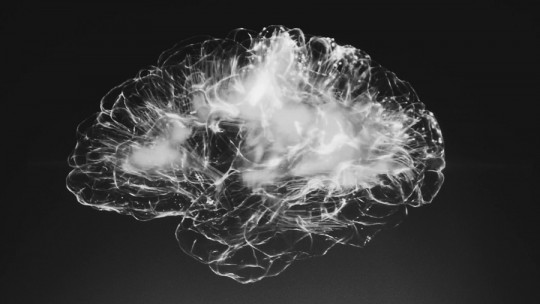
Post-traumatic amnesia or post-traumatic amnestic syndrome It frequently occurs in subjects who have suffered head injuries and can persist for years, seriously affecting the memory of events. Let’s see what its characteristics are.
Post-traumatic amnesia: definition
The term post-traumatic amnesia was first coined by the English neurologist Charles P. Symonds to refer to a general disturbance in brain functioning after consciousness has been regained Current research defines post-traumatic amnesia as a persistent, stable and global memory impairment, due to an organic brain disorder, in the absence of other types of cognitive deficits.
In post-traumatic amnesia, there is difficulty in evoking and acquiring new information; the subject is unable to keep a continuous record of her daily activities. This syndrome frequently occurs in moderate and severe traumatic brain injuries (TBI), along with permanent memory deficits.
These memory deficits are mainly due to focal lesions in the hippocampus (structure closely linked to memory and special location) and adjacent structures, as well as other diffuse brain damage.
Characteristics of this syndrome
Post-traumatic amnesia is the result of the sum of various factors such as the loss of consciousness caused by the injury, retrograde amnesia that ranges from a few minutes to years prior to the accident, and anterograde amnesia that ranges from a few hours to months following the accident. recovery of consciousness.
This memory syndrome is made up of various factors such as loss of consciousness as a result of the injury or trauma, retrograde amnesia (inability to remember events that occurred before the injury) and, sometimes, anterograde amnesia. Parkin and Leng defined the following characteristics of post-traumatic amnesia:
What can cause this memory disturbance?
Blows and trauma to the head and skull are the best known causes when we refer to post-traumatic amnesia. However, there are another series of factors – some avoidable – to take into account to know what can cause a syndrome of this type.
1. Stroke
A stroke happens when blood flow to the brain stops and it cannot continue receiving oxygen and nutrients. Neurons can die, generating permanent damage at a functional and structural level.
2. Encephalitis
Encephalitis, or inflammation of the brain, can occur as a result of a viral infection (for example, the herpes simplex virus) or as an autoimmune reaction to cancer.
3. Hypoxia or anoxia
Hypoxia, when there is a lack of oxygen, and anoxia, when there is a total absence of it, may be causal factors in post-traumatic amnesia. This lack of oxygen can be due to a heart attack, respiratory distress, or carbon monoxide poisoning, for example.
4. Alcohol abuse
Long-term alcohol abuse can lead to thiamine (vitamin B1) deficiency. A severe deficiency of this vitamin can lead to brain damage and the appearance of Wernicke-Korsakoff syndrome a brain disease that causes lesions in the thalamus and hypothalamus, resulting in irreversible damage to cognitive functions such as memory.
5. Degenerative diseases, tumors and other pathologies
Degenerative brain diseases, tumors and other pathologies such as cancer can cause memory syndromes depending on the areas of the brain affected.
Symptoms
Post-traumatic amnesia is generally accompanied by strong temporal and spatial disorientation, attentional deficits (mainly in sustained and focused attention), retrograde and anterograde amnesia, confabulation, agitation and disinhibited behavior.
During the course of the syndrome, patients feel confused, disoriented and have great difficulty processing information that comes from the environment Depending on the intensity of the injury, patients will remember with greater or lesser difficulty the events that occurred around the accident or minutes before.
Regarding language, subjects who suffer from post-traumatic amnesia usually present incoherent speech and their perception of the environment and new stimuli is distorted, which generates an exacerbation of confusion and fear.
It is also common for patients to be aggressive (physically or verbally) and restless. Additionally, people with post-traumatic amnestic syndrome may have hallucinations
Other memory deficits
In addition to post-traumatic amnesia, there are other types of mnestic syndromes in which different types of memory are affected in various brain areas. Below are the most common ones:
1. Temporary amnesic syndrome
In the amnesias in which the medial temporal lobe is affected, the patient usually presents anterograde episodic and semantic amnesia (affecting both general and personal and autobiographical information) and retrograde amnesia. However, short-term and procedural memory remain preserved.
2. Diencephalic amnesic syndrome
In diencephalic amnesias, patients present retrograde amnesia and anterograde amnesia (both semantic and episodic) that is not always explained by an inability to store information but can be related, in part, to a memory disorder, an element that distinguishes them from temporary amnesias.
On the other hand, in this syndrome There is also a deficit in metamemory (ability to assess one’s own memory capacity)
3. Frontal amnesic syndrome
Amnesia due to damage to the frontal cortex do not cause a global memory leak, since this area of the brain is responsible for strategic processes of retrieving, monitoring and verifying information. On the other hand, patients do see their ability to search and select relevant information for each situation and context diminished.
4. Semantic dementia
This type of amnestic syndrome presents with significant impairment of declarative retrograde memory (responsible for storing memories and events in our lives that can be expressed explicitly). However, non-declarative memory, language grammar and other cognitive functions are preserved.








